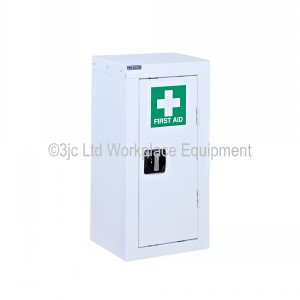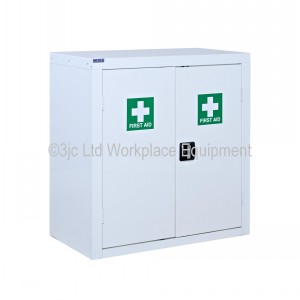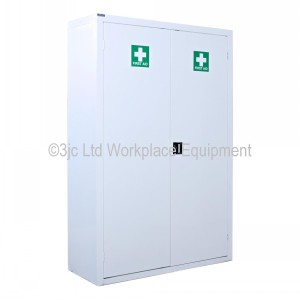First aid is a critical aspect of health and safety, whether it’s in the home, workplace, or public spaces. Having an adequately stocked first aid cabinet can be the difference between a minor injury and a major health crisis.
Understanding the Importance of a First Aid Cabinet
A first aid cabinet is an essential component of any health and safety strategy. It contains vital medical supplies that can be used to provide immediate medical attention in case of an emergency. The importance of a fully stocked first aid cabinet cannot be overstated.
Why is a First Aid Cabinet Necessary?
A first aid cabinet is necessary because it provides the first line of defence in case of a medical emergency. It allows for immediate response to injuries or health issues, which can significantly reduce the severity of the situation. A well-stocked first aid cabinet can even save lives in some cases.
Legal Requirements for a First Aid Cabinet
What Should Be Included in a First Aid Cabinet?
Bandages and Dressings
Sterile Eye Dressings and Eye Wash
Resuscitation Devices
In case of a severe emergency, resuscitation devices such as a face shield or pocket mask can be life-saving. These devices should be included in your first aid cabinet and should be easily accessible.
Medications and Creams
Depending on the specific needs of your environment, you may also want to include certain medications and creams in your first aid cabinet. These can include painkillers, antiseptic creams, and antihistamines.
Special Considerations for Stocking Your First Aid Cabinet
Risk Assessment
Size and Location of the Cabinet
Regularly Check and Restock
First Aid Cabinets from 3JC Ltd.
First Aid Storage Cabinet Size 1 Extra Small
First Aid Storage Cabinet Size 4 Medium
First Aid Storage Cabinet Size 6 Extra Large
Conclusion
A well-stocked first aid cabinet is an essential component of any health and safety strategy. By understanding the specific needs of your environment and including the necessary supplies, you can ensure that you’re prepared for any medical emergency.
First Aid Cabinet 101: Frequently Asked Questions
1. What is a first aid cabinet, and why do you need one?
2. How do you choose the right first aid cabinet for your workplace?
The right first aid cabinet for your workplace depends on several factors, such as the size, type, and location of your business, the number and nature of your employees, and the potential hazards and risks involved. It would help if you considered the following aspects when choosing your first aid cabinet:
- Size: The size of your first aid cabinet should match the number of employees and the frequency of use. You should have enough supplies to treat all possible injuries and illnesses and to replenish them regularly.
- Type: The type of your first aid cabinet should match the classification and configuration of your first aid kit. HSE defines three categories of first aid kits: Category A for low-risk workplaces, Category B for medium-risk workplaces, and Category C for high-risk workplaces.
- Location: The location of your first aid cabinet should be easily accessible and visible to all employees. It would help if you placed your first aid cabinet near the areas where injuries or illnesses are most likely to occur and avoid obstacles, locks, or barriers that may delay or prevent access. You should also mark your first aid cabinet with a sign or a symbol that indicates its contents and purpose.
3. How do you maintain and update your first aid cabinet?
You should regularly maintain and update your first aid cabinet to ensure its effectiveness and safety. You should assign a person or a team responsible for inspecting, cleaning, and restocking your first aid cabinet at least once a month or more often if needed. You should also check your supplies’ expiration dates and quality and replace any expired, damaged, or missing items. You should also review and update your first aid cabinet contents according to the changes in your workplace, such as new hazards, new employees, or new regulations.
4. How do you use your first aid cabinet in an emergency?
You should use your first aid cabinet in an emergency to provide immediate and appropriate care to an injured or ill employee. You should follow these steps when using your first aid cabinet:
- Assess the situation and call for help if needed. Check the scene for any dangers and the victim for any life-threatening conditions, such as bleeding, breathing, or consciousness. Call your local emergency number if the situation is serious or beyond your skills.
- Get consent and put on gloves. Before you provide any care, ask the victim for permission if they are conscious and able to respond. If they are unconscious or unable to respond, assume you have their consent. Wear gloves or other protective equipment to prevent infection and blood or body fluids exposure.
- Find and use the appropriate supplies and equipment. Locate your first aid cabinet and open it. Find the supplies and equipment that match the type and severity of the injury or illness. Follow the instructions and directions on the labels and packages. Use the supplies and equipment carefully and correctly, and avoid causing further harm or pain to the victim.
- Monitor and document the situation. After you provide the initial care, monitor the victim’s condition and vital signs, such as pulse, breathing, and skin colour. Keep the victim comfortable and calm until help arrives. Document the incident, the care provided, and the supplies and equipment used. Report the incident to your supervisor or manager and seek medical attention.




